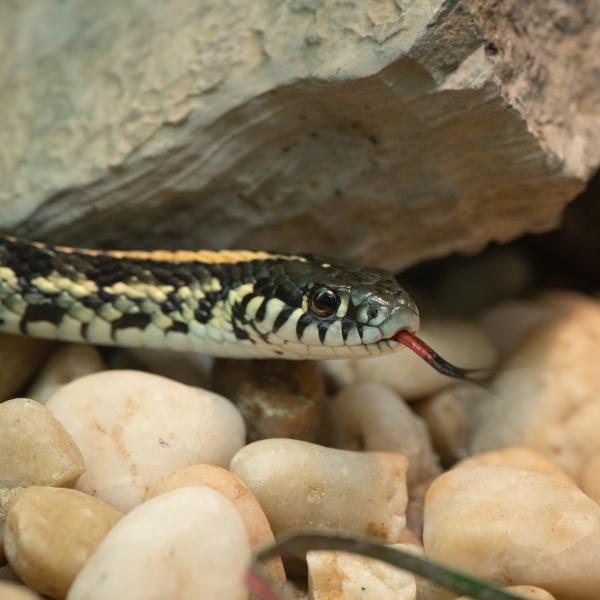The Plains gartersnake is one of four species of gartersnakes found in Ohio, but it is listed as state endangered and found in one county.
Unlike the common gartersnake, which you may see in your backyard or other public areas, the Plains gartersnake is more specialized in its habitat choices. It can be found in meadows and prairies near water sources, such as ponds and streams.
At the Columbus Zoo, we’re dedicated to the conservation of the Plains gartersnake, specifically through our support of the Plains Gartersnake Recovery Project in Ohio.
Scientific Name: Thamnophis radix
Conservation Status: Least Concern
Size: Length ranges from 16 to over 20 inches
Weight: Average is around 150 grams
Median Life Expectancy:









